Top 14 Dangerous Animals in Vietnam: What Every Tourist Should Know
Vietnam’s diverse landscapes—from dense jungles and misty mountains to tropical coastlines—make it a dream destination for nature lovers and adventure seekers. But amidst all the breathtaking beauty lies a hidden truth: some of Vietnam’s native wildlife can be dangerous if you’re not careful. Whether you’re trekking through national parks, cycling in the countryside, or simply relaxing near water, it’s important to know what creatures you might encounter and how to stay safe.
Why You Should Care About Wildlife Dangers in Vietnam
Vietnam is home to more than 10,000 species of animals, including over 200 types of snakes, hundreds of insects, and numerous jungle-dwelling mammals. While most are harmless or avoid human contact, a small number can cause serious harm through venom, disease, or unexpected aggression. Risks vary by environment: you might encounter venomous snakes while hiking in the north, aggressive wasps in highland farms, or jellyfish in the southern seas.
For adventure travelers—especially those trekking off the beaten path or visiting remote areas—being aware of these dangers is not just helpful, it’s essential. Knowing how to spot risk and respond calmly can make all the difference between a story worth telling and a trip cut short.
Top 14 Dangerous Animals and How to Avoid Them
This is your go-to guide to the 14 most dangerous animals in Vietnam—what they look like, where they hide, how risky they are, and most importantly, how to avoid them and react in case of an emergency.
1. Vespa affinis (Lesser Banded Hornet)
Danger Level: 8/10
The Lesser Banded Hornet is one of the most dangerous insects in Vietnam due to its highly aggressive nature. These large wasps have distinct yellow-black stripes and will attack when they feel threatened—even if you simply get too close to their nest. They often build nests in forests, bushes, or under roofs in mountainous or rural areas, especially common in Northern Vietnam and the Central Highlands during summer and autumn.
Prevention Tips:
Avoid wearing brightly colored clothes or scented products (like perfume) when going into the forest.
Refrain from shaking trees or tapping objects that may conceal a nest.
If you hear a loud buzzing or see a swarm, calmly and quietly leave the area—don’t run or wave your arms.
First Aid if Stung:
Clean the sting area with soap and clean water.
Apply a cold compress to reduce swelling and pain.
If severe allergic reactions occur—such as difficulty breathing, whole-body swelling, or dizziness—seek emergency medical help immediately.
Those with known allergies to insect stings should carry epinephrine (EpiPen) when trekking.
2. Cobras
Danger Level: 9/10
The cobra is a highly venomous snake, easily recognized by its distinctive hood that flares when it feels threatened. Measuring between 1.2 to 1.6 meters long, it typically has a dark brown or black body. This species is commonly found in rice fields, village outskirts, or sparse forests—especially in northern and central Vietnam. While cobras don’t usually attack unless provoked, they can strike with lightning speed when stepped on or startled.
Prevention Tips:
Wear high boots and long pants when hiking or walking in rural areas.
Never provoke snakes, and avoid approaching even dead ones—they may still bite reflexively.
Use a flashlight when walking at night.
First Aid:
Stay calm and immobilize the bitten limb to slow venom spread.
Do not cut, suck, or tightly bandage the wound.
Transport the victim to a medical facility immediately for antivenom treatment.
3. Mosquitoes
Danger level: 7/10
Though small and seemingly harmless, mosquitoes are responsible for transmitting dangerous diseases such as dengue fever, malaria, Japanese encephalitis, and Zika. They breed in stagnant water—ponds, rain puddles, abandoned containers—and are most active at dawn and dusk. Mosquitoes are especially prevalent during the rainy season (May–October) and in rural areas, forests, and the Mekong Delta.
How to prevent bites:
Use mosquito repellent and wear light-colored, long-sleeved clothing.
Sleep under a mosquito net, even during the day, especially in outbreak areas.
Eliminate any containers holding standing water around your accommodation.
First aid if symptoms appear:
If you develop a high fever, headache, or nausea a few days after being bitten, seek medical attention immediately.
Avoid self-medicating with aspirin or ibuprofen if dengue fever is suspected.
4. Centipede
Danger level: 6/10
Centipedes are arthropods that thrive in damp environments such as decaying wood piles, dense bushes, rock crevices, or even inside shoes and bedding that haven’t been used for a while. Large centipedes in Vietnam can grow up to 20–25 cm long, especially the red-headed species which carries potent venom. They are aggressive, mainly nocturnal, and will bite if touched or threatened. Their bite causes intense pain, swelling, redness, and may lead to fever, swollen lymph nodes, or even convulsions in sensitive individuals.
How to prevent centipede bites:
Don’t walk barefoot at night; always check shoes and bedding before use.
Keep your living space clean and dry—avoid storing damp or unused items.
Keep doors closed and install insect screens.
First aid for centipede bites:
Wash the wound thoroughly with soap and water, and apply a cold compress to reduce pain.
Do not cut the wound or apply herbal poultices.
If you experience severe swelling, breathing difficulty, or prolonged pain → seek medical attention immediately.
5. Tussock moth larva
Danger level: 4/10
Tussock moth larva are covered in fine hairs or small spines that contain toxins. When these come into contact with human skin, they can cause strong irritation. Common reactions include intense itching, red rashes, hives, or even prolonged dermatitis. Children and people with sensitive skin are more likely to experience stronger reactions.
How to prevent contact:
Wear long-sleeved clothing and a wide-brimmed hat when walking in forests or gardening.
Avoid sitting under trees where tussock moth larva are shedding hairs.
Do not touch tussock moth larva, even if they appear harmless.
First aid if exposed to tussock moth larva hairs:
Do not scratch or rub the area; use adhesive tape to gently remove any remaining hairs.
Wash the affected area with cold water and soap.
If severe rash, blisters, or difficulty breathing occurs → seek immediate medical attention.
6. Jellyfish
Danger Level: 6/10
Jellyfish are soft-bodied marine animals with umbrella-shaped bodies and long tentacles. Many species are venomous, especially fire jellyfish, which are commonly found along beaches in Central and Southern Vietnam.
When touched, jellyfish release venom through specialized stinging cells, causing a burning sensation and skin irritation.
While jellyfish stings are rarely fatal, they can cause intense pain, severe allergic reactions, and even anaphylactic shock in sensitive individuals.
Prevention:
Avoid swimming in areas where jellyfish are drifting or where warning signs are posted.
Wear long-sleeved swimsuits when going into the sea.
Do not touch or play with jellyfish, even those washed up on shore.
First Aid for Jellyfish Stings:
Rinse the affected area with clean seawater (do not use freshwater as it may increase venom absorption).
Carefully remove any remaining tentacles using a hard object like a plastic card or stick.
Soak the stung area in hot water (40–45°C) for 20–45 minutes to relieve pain and neutralize toxins.
Monitor for systemic reactions and seek medical help immediately if symptoms such as difficulty breathing, widespread swelling, or hives appear.
Poisoning from Improperly Prepared Jellyfish:
Jellyfish aren’t only dangerous through skin contact—eating improperly processed jellyfish can also lead to food poisoning.
Symptoms: Itching, nausea, abdominal pain, diarrhea, hives, shortness of breath.
Cause: Natural toxins in jellyfish that haven’t been eliminated through proper salting or treatment processes.
First Aid: Induce vomiting if caught early, administer activated charcoal if available, and bring the person to the hospital immediately if signs of anaphylaxis occur.
Only consume jellyfish that have been thoroughly processed by reputable sources. Never eat fresh or unverified jellyfish.
7. Stray Dogs, Cats
Danger Level: 8/10
Vietnam has many free-roaming or stray dogs and cats, especially in rural areas, markets, bus stations, and densely populated neighborhoods. Even household pets are often not fully vaccinated—lacking essential vaccines such as those for rabies and other infectious diseases.
Bites or scratches from stray animals can lead to serious infections or transmit rabies—a disease that is nearly 100% fatal without timely treatment. Even without being bitten, contact with their saliva (e.g. licking hands or face) can pose a risk.
Prevention Tips:
Do not pet, feed, or approach unfamiliar animals—even if they seem friendly.
Avoid disturbing dogs or cats while they are sleeping, eating, or caring for offspring.
Be alert to your surroundings, especially in alleys, markets, or rural areas.
First Aid After a Bite or Scratch:
Immediately wash the wound thoroughly with soap and clean running water for at least 15 minutes.
Disinfect with 70% alcohol or iodine solution.
Visit a healthcare facility for rabies vaccination as soon as possible—early treatment is crucial for survival.
If possible, observe the animal for 10 days to check for signs of illness (if the animal is still alive and healthy after 10 days, the risk of rabies is very low). However, full vaccination is still required.
8. Scorpions
Danger level: 4/10
Scorpions usually live in dark, damp places such as under rocks, inside rotting tree stumps, piles of dry leaves, or wall cracks. In Vietnam, they are commonly found in mountainous areas, jungles, rural regions, and even garden spaces.
Most scorpions in Vietnam are not deadly, but their stings can be very painful, causing swelling, burning sensations, and numbness that can last for hours. For children, the elderly, or those with allergic reactions, symptoms may become more severe—such as nausea, breathing difficulty, or rare cases of anaphylaxis.
Prevention:
When trekking or exploring nature, wear long pants and high boots; avoid walking barefoot.
Do not reach into rock crevices, hollow trees, bamboo clusters, or move long-undisturbed objects without careful inspection.
Always check shoes, clothing, and bedding before use—especially in homestays, tents, or countryside areas.
First aid for stings:
Stay calm—most stings are not life-threatening.
Wash the wound with soap and water.
Apply a cold compress to reduce swelling and pain.
Take pain relievers if needed.
If severe symptoms appear (e.g., trouble breathing, rapid swelling, convulsions), seek medical attention immediately.
9. Fire Ants
Danger Level: 3/10
Fire ants are small reddish-brown ants that typically nest in soil, grassy areas, tree bases, or near food sources. They live in large colonies and become extremely aggressive if their nests are disturbed. In Vietnam, fire ants are commonly found in rural areas, gardens, parks, and even urban residential zones.
While not life-threatening, fire ant bites cause a burning pain similar to a needle prick. The bites often develop into itchy blisters that can last for several days. People with sensitive immune systems may experience severe allergic reactions such as hives, difficulty breathing, or even anaphylactic shock—requiring immediate medical attention.
Prevention Tips:
When resting outdoors, avoid sitting directly on grass, tree bases, or bare ground without thoroughly checking the area.
Wear closed shoes and long socks when walking through forests, grasslands, or wild areas.
Never poke or disturb ant nests, even if they seem small and harmless.
Keep sweet foods and crumbs away from resting areas to avoid attracting ants.
First Aid for Bites:
Wash the affected area with soap and water. Do not scratch to avoid infection.
Apply a cold compress and use hydrocortisone cream or anti-itch lotion.
Take an antihistamine if itching is intense.
Seek emergency care if severe symptoms occur (widespread swelling, difficulty breathing, dizziness).
10. Fleas, Ticks, and Lice
Danger Level: 4/10
These are small parasitic insects that survive by feeding on the blood of animals or humans.
Fleas typically live on dogs, cats, rodents, or in carpets and bedding.
Ticks are commonly found on pets—especially around the ears, neck, or legs—and can transfer to humans through close contact.
Lice inhabit the scalp, body hair, or clothing, and spread easily in unhygienic living conditions.
These pests often cause intense itching, red rashes, and can transmit diseases such as epidemic typhus (lice), scrub typhus (ticks), or allergic reactions from flea bites. While their bites are small, scratching can lead to infection or scarring. In Vietnam, they are most commonly found in forested areas, animal farms, or poorly maintained budget accommodations.
Prevention Tips:
Avoid contact with stray animals or poorly groomed pets.
When trekking or staying in highland homestays, wear long clothing, tuck pant legs securely, and check your skin nightly...
Do not sleep directly on old mattresses, dirty carpets, or unwashed sleeping bags.
Use insect repellents or natural oils like citronella or peppermint around your lodging area.
First Aid for Bites or Tick Removal:
Use tweezers to firmly pull out the tick—avoid twisting to ensure the head is not left in the skin.
Clean the area with soap and disinfect it thoroughly.
Monitor your health for several days. If you experience fever, fatigue, or widespread rashes after a bite, seek medical attention immediately to test for possible infections.
11. Spiders
Danger Level: 3/10
Vietnam is home to hundreds of spider species, ranging from tiny household spiders to forest-dwelling long-legged spiders, red-backed spiders, and unique trapdoor spiders. Most spiders are harmless and even beneficial, as they prey on pest insects. However, some species possess venom that can cause pain, swelling, or severe allergic reactions when they bite. Spiders are commonly found in dense forests, caves, overgrown gardens, or neglected old buildings. If you encounter large or unfamiliar spiders (especially those with bright colors, long legs, or quick movements), it’s best to avoid contact.
Prevention:
Avoid putting your hands into thick bushes, crevices, or large tree roots when trekking.
Shake out shoes, bags, and jackets before use—especially in forested areas.
Keep resting areas clean and enclosed; avoid leaving clothes or belongings scattered on the ground.
First Aid for Spider Bites:
Wash the bite area with soap and warm water; apply a cold compress to reduce swelling.
Monitor your condition for 24 hours. Seek medical attention if symptoms like dizziness, fever, difficulty breathing, or rashes appear.
Avoid scratching the bite to prevent infection.
12. Leeches & Land Leeches
Danger Level: 3/10
Leeches and land leeches are blood-sucking creatures commonly found in humid forests, streams, swamps, or areas with thick, damp leaf litter. Land leeches are small, thin, and move quickly. They often attach to the feet, neck, or stomach when tourists hike through the jungle. Water leeches usually live in streams and attach to the body when wading or soaking feet.
Once attached, they release anticoagulants and mild anesthetics, so the bite is often painless. However, after detaching, the wound may bleed for a while and can become itchy, swollen, or infected if not cleaned properly.
Though they don’t transmit dangerous diseases like mosquitoes or ticks, leeches and land leeches can scare unsuspecting hikers. Improperly treated bites may lead to infections or leave scars.
Prevention Tips:
Wear long clothing, tuck pants into socks or boots, and use high-top shoes. Apply citronella oil, DEET repellent, or Vaseline around ankles, knees, and wrists to deter leeches.
Avoid sitting or placing backpacks directly on damp forest ground.
After walking through water or taking a break, check your clothes and body carefully.
First Aid:
Do not pull the leech off with force, as this may tear the skin and cause infection.
Instead, apply salt, lemon juice, alcohol, or fresh tobacco leaves to make the leech release on its own.
Clean the wound with soap and apply antiseptics like Betadine or iodine alcohol. Monitor the bite site for several days.
13. Wild Monkeys
Danger Level: 5/10
Monkeys are intelligent and agile animals commonly found in national parks, eco-tourism areas, and remote islands such as Cat Ba, Con Dao, and Son Tra.
While monkeys are not predators and do not possess venom, they can become unexpectedly dangerous—especially to children—if tourists are careless. Monkey bite incidents are not uncommon, especially when people try to retrieve stolen items or fight back.
Prevention Tips:
Do not feed monkeys or carry exposed food in monkey-inhabited areas.
Keep a safe distance and avoid taking close-up selfies with monkeys.
Do not tease, throw objects at, or provoke them in any way.
Secure all personal items, especially bags, hats, and phones.
Teach children to stay away from monkeys and not to play near them.
First Aid for Monkey Bites:
Wash the wound thoroughly with clean water and soap for at least 15 minutes.
Apply an antiseptic and seek medical attention immediately for rabies vaccination and wound assessment.
Monitor the wound over the next few days and prevent infection.
14. Bats – Carrier of Zoonotic Viruses
Danger Level: 4/10
While most bats in Vietnam are harmless and play a vital role in ecosystems by eating insects or pollinating flowers, some species—especially fruit bats and cave-dwelling bats—can carry zoonotic viruses such as rabies, Nipah, or coronaviruses. They’re nocturnal, live in caves or abandoned buildings, and sometimes enter urban areas in search of food
The danger lies not in the bat itself but in its potential to transmit viruses through bites, scratches, or contact with saliva and feces (guano). Handling bats without protection or exploring poorly ventilated caves with large bat colonies can increase exposure risks.
Prevention Tips:
Avoid direct contact with bats, especially in caves or abandoned buildings.
Do not attempt to rescue or touch grounded or injured bats.
Wear a mask when exploring caves or guano-rich environments.
Ensure rabies vaccinations if you work closely with wildlife or in high-risk areas.
First Aid:
If bitten or scratched, wash the wound immediately with soap and water for at least 15 minutes, disinfect thoroughly, and seek urgent medical care for rabies post-exposure prophylaxis.
Wildlife Safety Tips for Tourists
When exploring Vietnam’s rich natural landscapes, staying safe around wildlife is just as important as enjoying the view. Here are essential safety tips every traveler should follow:
Dress Right for the Jungle or Trek: Always wear closed-toe boots, long pants, and insect repellent when trekking through forests or rural areas. These protect you from insect bites, leeches, and thorny vegetation.
Avoid Solo Treks or Going Off-Trail: Wildlife encounters often happen when travelers wander off marked paths. Stick to guided tours or inform locals of your route and estimated return time. Never trek alone in remote areas.
Be Cautious Around Water: Vietnam’s waters are home to both freshwater and marine hazards. Avoid standing barefoot in rivers or ponds, and watch out for jellyfish or sea urchins when swimming in the ocean.
Do Not Feed or Approach Wild Animals: Feeding wild animals may seem harmless, but it encourages aggressive behavior, spreads disease, and disrupts natural behaviors. Keep a safe distance, even from animals that seem friendly.
Know Where to Get Medical Help: Before entering wildlife-rich zones, note down local emergency numbers, the nearest rabies clinics, and hospitals. Quick access to medical help can make all the difference in an emergency.
Travel Smart, Respect Nature, and Stay Safe in Vietnam
By staying alert, respecting local wildlife, and following simple safety precautions, you’ll not only protect yourself but also help preserve the natural beauty and balance of this remarkable country. Travel smart, tread lightly, and treat all creatures with care! Wishing you a safe, joyful, and unforgettable adventure in Vietnam.
>>> Top 10 Risky Dishes to Avoid on Your Vietnam Street Food Tour: Food Safety Tips for a Healthy Trip
>>> Mosquito Season in Vietnam: What You Need to Know and How to Stay Safe
Send us your comments about : Top 14 Dangerous Animals in Vietnam: What Every Tourist Should Know
Required fields *
You might also be interested
Our clients’ favorite journeys to customize
Looking for inspiration? Discover some of our most popular tours in Vietnam, highly appreciated by our travelers. They are a great starting point to help you choose the perfect journey through Vietnam, Laos, Cambodia, Myanmar, or Thailand—whether you’re traveling solo, as a couple, with family, or with friends.
And since this is your trip, feel free to customize it just the way you like!
Vietnam Cambodia Itinerary 14 Days
Hanoi – Hoa Binh – Mai Chau – Ninh Binh – Halong bay – Hue - Danang – Hoian – Saigon – Ben Tre - Can Tho – Saigon - Siem Reap Angkor - Tonlé Sap - Siem Reap – Ta Prohm - Departure
Vietnam 14 Day Itinerary
Vietnam 14-day itinerary covers the country’s top highlights and quintessential experiences for an unforgettable journey.
Honeymoon Tour Pakcages In Vietnam 12 Days
Saigon Arrival - City Tour – Mekong Delta – Danang – Hoian - by flight - Da Nang – Hanoi - by flight – Halong - overnight on junk – Departure
Authentic Hoang Su Phi Trekking Tours
Hoang Su Phi trekking tours take you to stunning terraces, meet few tourists, connect with locals and enjoy authentic culture.
Best Nha Trang Beach Tour 4 Days
Saigon/Hanoi – Nha Trang relaxation – Saigon/Hanoi – Departure
Mekong Delta Bike Tour Itinerary 7 Days
Cycle through the Mekong Delta in 7 days, discovering floating markets, orchards, craft villages, and tranquil green islands.
Are you interested in this tour?



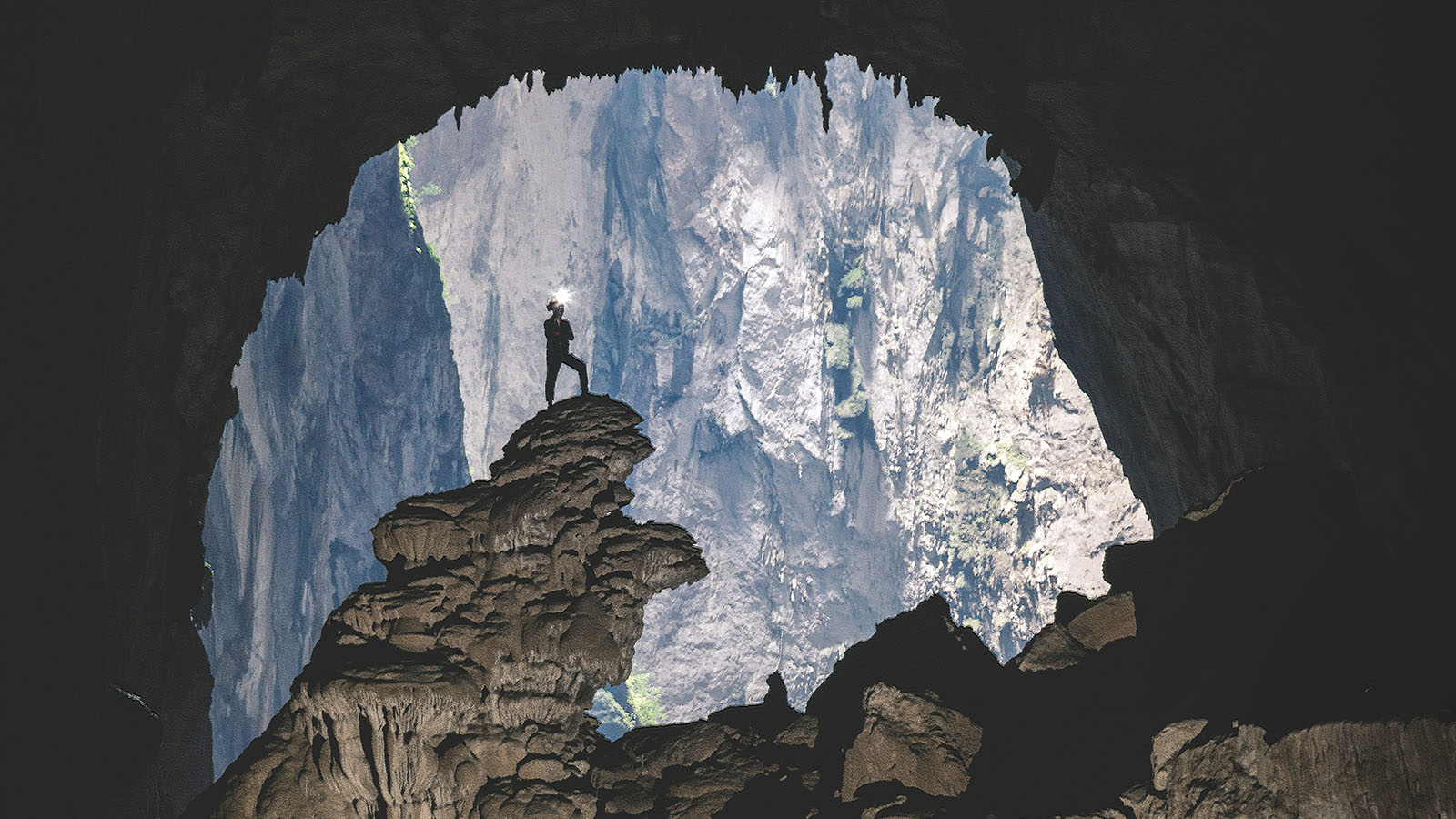
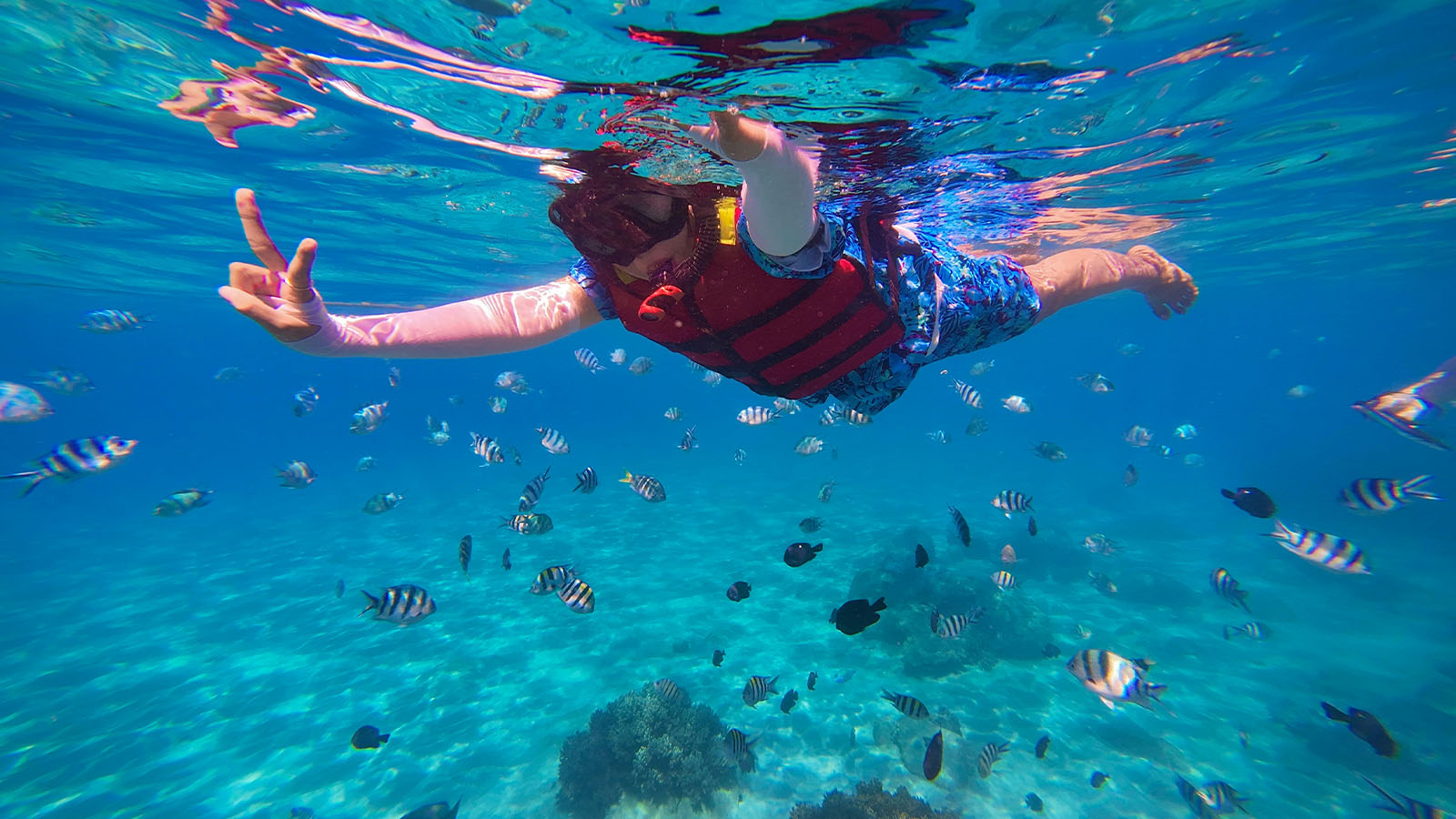

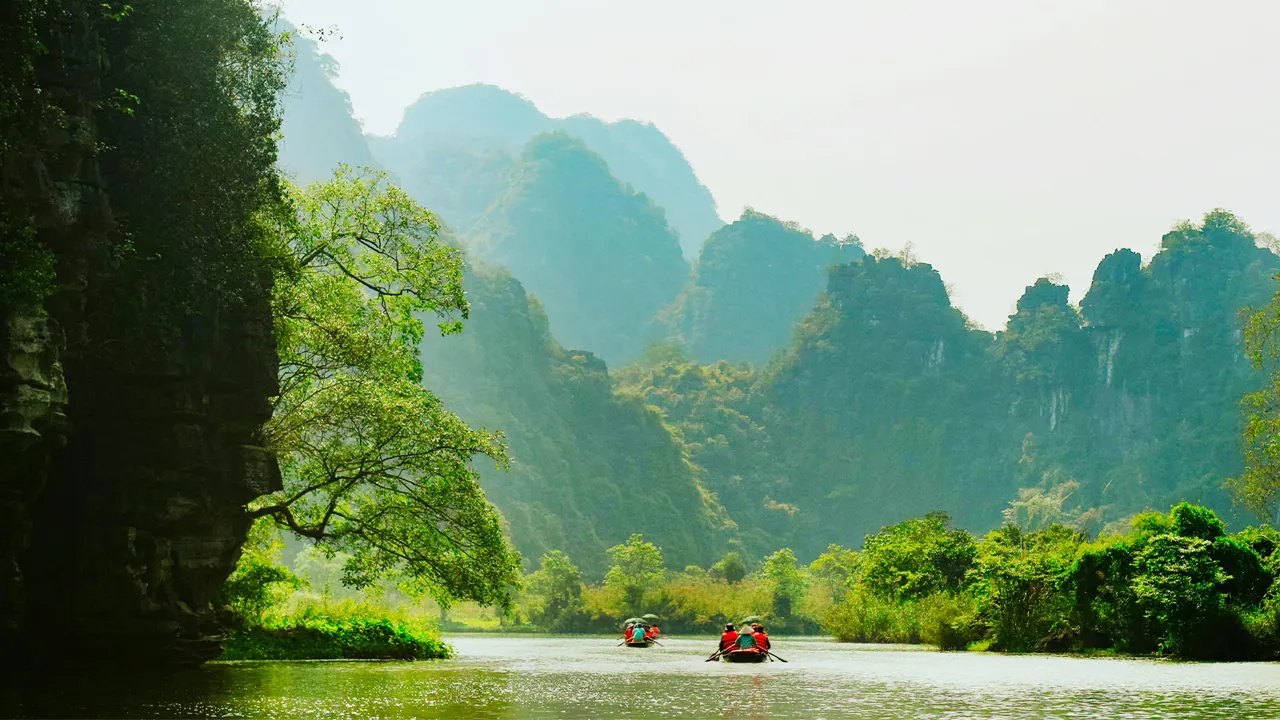





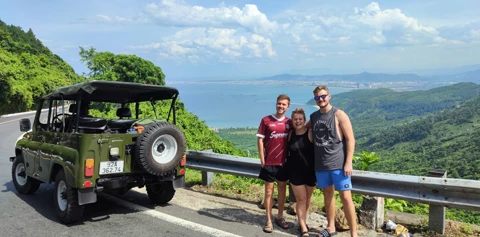



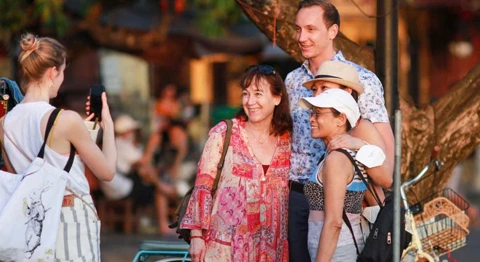
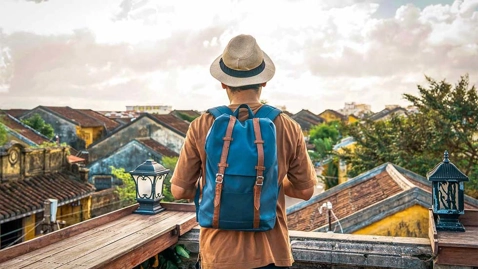
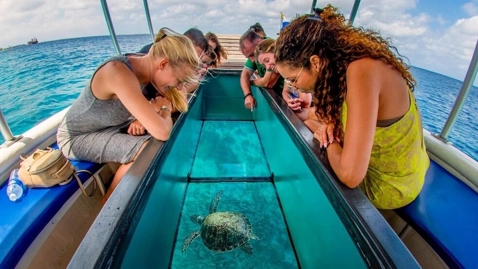

















Comment